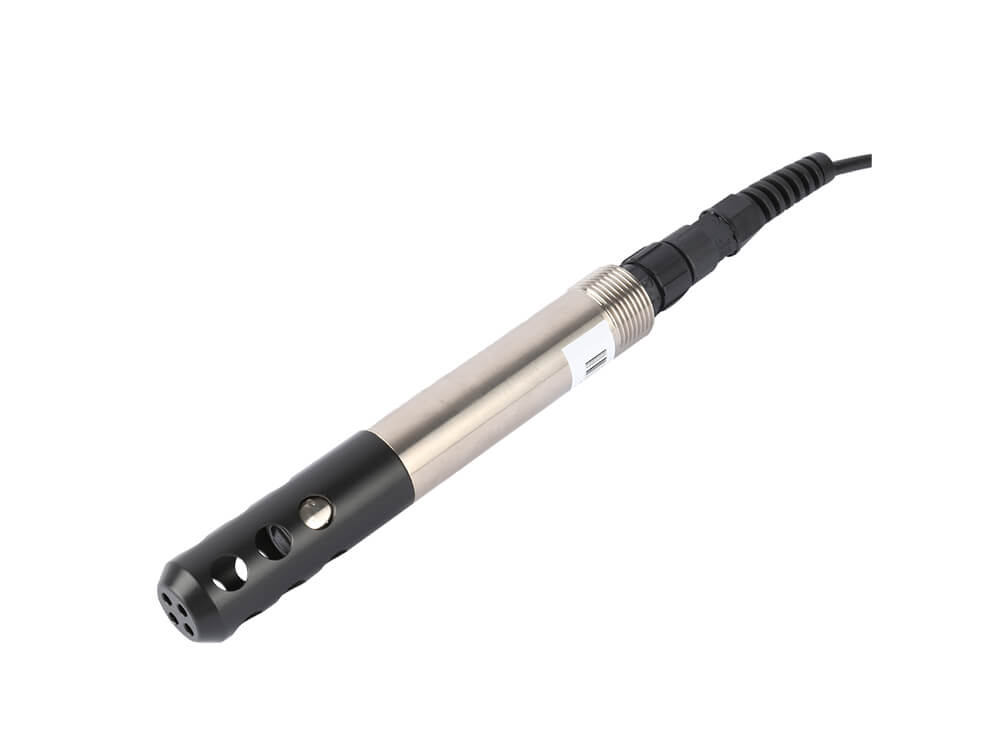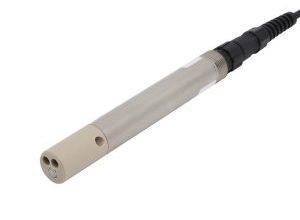Why Dissolved Oxygen Sensors Are Essential for Sustainable Aquatic Ecosystems

Water is a fundamental resource for life on Earth, and its quality is crucial to the survival of aquatic organisms, human communities, and the broader environment. One of the most important parameters for assessing water quality is dissolved oxygen (DO), which plays a vital role in supporting life in aquatic ecosystems. For fish, invertebrates, and microorganisms, oxygen dissolved in water is essential for respiration, metabolism, and overall health. Without enough oxygen, these ecosystems can collapse, leading to the loss of biodiversity and significant environmental harm.
To monitor and maintain healthy oxygen levels in water bodies, dissolved oxygen sensors have become an indispensable tool. These sensors provide real-time, precise measurements of oxygen concentrations in various water bodies, helping to prevent oxygen depletion, improve water quality management, and support sustainable practices. In this blog, we will explore why dissolved oxygen sensors are essential for preserving aquatic ecosystems and ensuring the sustainability of water resources in the face of environmental challenges.
The Importance of Dissolved Oxygen in Aquatic Ecosystems
Oxygen in water is a critical factor for the survival of most aquatic life forms. It is absorbed from the atmosphere through surface contact or generated by aquatic plants during photosynthesis. Aquatic animals, such as fish, rely on this dissolved oxygen to breathe, while microorganisms and plants also require it for metabolic functions. Dissolved oxygen is particularly important for maintaining the health of rivers, lakes, estuaries, and oceans, as it directly impacts the oxygen available to various species within these ecosystems.
When oxygen levels in water bodies decrease significantly, the environment enters a state of hypoxia (low oxygen), which can be fatal to many aquatic organisms. In more severe cases, oxygen depletion can lead to anoxia (no oxygen), where life cannot be sustained. Hypoxic and anoxic conditions are typically caused by a combination of factors such as pollution, over-nutrification, and temperature fluctuations.
Eutrophication, driven by excess nutrients from agricultural runoff or wastewater, can trigger algal blooms that consume large amounts of oxygen when they die and decompose. This can create “dead zones” in aquatic ecosystems, areas with dangerously low oxygen levels where marine life cannot survive.
How Dissolved Oxygen Sensors Work
Dissolved oxygen sensors measure the concentration of oxygen in water, providing real-time data on oxygen availability. This information is crucial for monitoring water quality in various applications, including environmental monitoring, wastewater treatment, and aquaculture. There are two primary types of dissolved oxygen sensors: electrochemical sensors and optical sensors.
1. Electrochemical Sensors (Clark-type Sensors)
Electrochemical sensors are the most common type of do sensor. They function using a system of electrodes, including a working electrode and a reference electrode, separated by a semi-permeable membrane. Oxygen molecules from the water pass through the membrane and interact with the working electrode, producing an electrical current proportional to the concentration of oxygen in the water.
These sensors are relatively affordable, reliable, and widely used in water quality monitoring. However, they require regular maintenance, including cleaning and replacing the membrane, to ensure accurate measurements.
2. Optical Sensors
Optical dissolved oxygen sensors use fluorescence to measure oxygen levels. These sensors contain a special coating that fluoresces when exposed to light. The intensity of fluorescence decreases as oxygen concentration increases, and the sensor measures this change to determine the oxygen levels in the water. Optical sensors are highly accurate, require minimal maintenance, and are resistant to fouling, making them ideal for continuous monitoring in challenging environments.
The Role of Dissolved Oxygen Sensors in Sustainable Aquatic Ecosystems
Dissolved oxygen sensors are an essential tool for achieving sustainability in aquatic ecosystems. Here are some of the ways these sensors contribute to preserving water quality and supporting ecological health:
1. Early Detection of Hypoxic Conditions
One of the main functions of dissolved oxygen sensors is to detect early signs of oxygen depletion in water bodies. Continuous monitoring of DO levels enables the identification of hypoxia before it becomes critical. Early intervention can prevent fish kills and protect aquatic life. By detecting changes in DO levels over time, environmental agencies can take corrective measures, such as reducing nutrient pollution or managing water flow, to restore oxygen levels.
2. Support for Water Quality Management
Effective water quality management relies on understanding key parameters like DO, temperature, and pH. By providing real-time data on oxygen levels, dissolved oxygen sensors help water managers make informed decisions about pollution control, water treatment, and habitat protection. This is particularly crucial in managing large water bodies such as lakes, rivers, and estuaries, where oxygen levels can fluctuate rapidly due to human activities or seasonal changes.
Dissolved oxygen sensors are especially important in monitoring areas with high human activity, such as near agricultural runoff or urban wastewater discharges. These sensors help ensure that water bodies remain healthy, even as they face increasing pressures from pollution and climate change.
3. Improved Aquaculture Practices
Aquaculture, the farming of fish and other aquatic species, is a fast-growing industry that requires careful management of water quality. Fish farms, shellfish nurseries, and other aquaculture operations rely on optimal oxygen levels to ensure the health and productivity of farmed species. Insufficient oxygen levels can lead to disease outbreaks, reduced growth rates, and even mass mortality of aquatic organisms.
By integrating dissolved oxygen sensors into aquaculture systems, operators can continuously monitor oxygen levels and adjust aeration systems to maintain optimal conditions. This helps improve yields, reduce waste, and minimize the environmental impact of aquaculture operations.
4. Wastewater Treatment Optimization
Dissolved oxygen sensors play a critical role in optimizing wastewater treatment processes, particularly in aeration tanks. Aerobic bacteria are used to break down organic matter in wastewater, but these bacteria require a constant supply of oxygen to function effectively. By monitoring DO levels in real time, wastewater treatment plants can adjust aeration rates, ensuring that the bacteria receive enough oxygen without wasting energy on over-aeration.
The efficient use of dissolved oxygen in wastewater treatment helps reduce operating costs and energy consumption, making the process more sustainable. Additionally, ensuring proper oxygen levels promotes the breakdown of pollutants, improving water quality and reducing the environmental impact of wastewater discharge.
5. Mitigating the Effects of Climate Change
Climate change is increasingly affecting the oxygen content of water bodies. Rising temperatures, for example, reduce the solubility of oxygen in water, making it harder for aquatic organisms to obtain the oxygen they need. In addition, extreme weather events such as floods or droughts can further disrupt oxygen levels.
Dissolved oxygen sensors are invaluable in monitoring the impacts of climate change on aquatic ecosystems. By providing continuous data on DO levels, these sensors enable early detection of potential oxygen depletion due to temperature increases or altered hydrological conditions. This data can help inform climate adaptation strategies and ensure that ecosystems remain resilient in the face of climate change.
Applications of Dissolved Oxygen Sensors in Various Sectors
Dissolved oxygen sensors are used in a variety of sectors, each with its own set of challenges and requirements. Here are some key applications:
1. Environmental Monitoring and Conservation
Dissolved oxygen sensors are extensively used by environmental agencies and researchers to monitor the health of rivers, lakes, and oceans. These sensors help track the impacts of pollution, climate change, and over-exploitation of water resources on aquatic ecosystems. Continuous DO monitoring allows for the early detection of potential ecological threats, enabling timely action to prevent environmental damage.
2. Aquaculture and Fisheries Management
In aquaculture, DO sensors are used to monitor and regulate oxygen levels in fish farming operations. Aquaculture operators rely on these sensors to optimize aeration systems, ensuring that oxygen levels are maintained for healthy fish growth. Proper oxygen management leads to better fish health, improved productivity, and reduced risk of disease outbreaks.
3. Industrial Wastewater Treatment
In industrial wastewater treatment, dissolved oxygen sensors help optimize the biological treatment process. They ensure that the aerobic bacteria responsible for breaking down organic matter in wastewater receive enough oxygen to function effectively. This helps improve the efficiency of treatment plants, reduce energy consumption, and meet regulatory water quality standards.
4. Biotechnology and Fermentation
Dissolved oxygen is also important in biotechnology and fermentation processes. In industries such as pharmaceuticals, biofuels, and brewing, oxygen is essential for the growth of microorganisms involved in production. Sensors help maintain optimal oxygen levels, which can enhance product yields and efficiency in these industries.
The Future of Dissolved Oxygen Sensors
As technology continues to evolve, the future of dissolved oxygen sensors looks promising. Emerging trends include the integration of Internet of Things (IoT) technologies, cloud-based monitoring platforms, and artificial intelligence (AI) for predictive water quality management. These innovations will allow for more accurate, real-time monitoring, automated responses, and better integration with other water quality parameters.
The growing focus on sustainability and environmental conservation will continue to drive the demand for dissolved oxygen sensors, ensuring that they remain essential tools for protecting aquatic ecosystems and promoting sustainable water management.
Conclusion
Dissolved oxygen sensors are crucial for maintaining the health and sustainability of aquatic ecosystems. By providing accurate, real-time data on oxygen levels, these sensors help monitor water quality, optimize industrial processes, and support sustainable practices in aquaculture and wastewater treatment. In the face of growing environmental challenges, the role of dissolved oxygen sensors in preserving aquatic biodiversity and ensuring the availability of clean water will only continue to grow. Their integration into smart water quality management systems, coupled with advancements in technology, promises to revolutionize the way we protect and manage water resources in the future.



